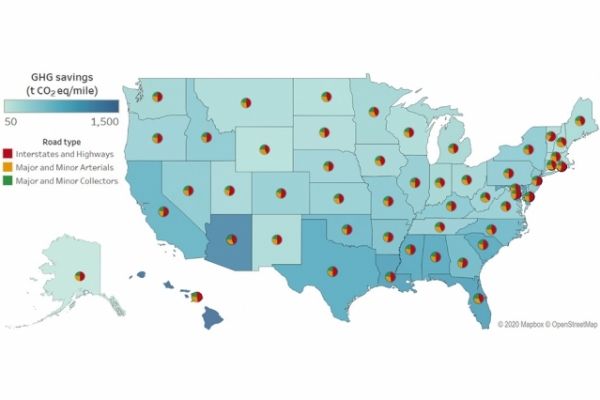Every time you hear a deep rumble and feel your house shake when a big truck roars by, that’s partly because the weight of heavy vehicles causes a slight deflection in the road surface under them. It’s enough of a dip to make a difference to the trucks’ overall fuel efficiency.
Now, a theoretical study by MIT researchers suggests that small changes in roadway paving practices could reduce that efficiency loss, potentially eliminating a half-percent of the total greenhouse gas emissions from the transportation sector, at little to no cost.
The findings are detailed in a paper in the journal Transportation Research Record, by MIT postdoc Hessam Azarijafari, research scientist Jeremy Gregory, and principal research scientist in the Materials Research Laboratory Randolph Kirchain. The study examined state-by-state data on climate conditions, road lengths, materials properties, and road usage, and modeled different scenarios for pavement resurfacing practices.
They found that that one key to improving mileage efficiency is to make pavements that are stiffer, Kirchain explains. That reduces the amount of deflection, which reduces wear on the road but also reduces the slightly uphill motion the vehicle constantly has to make to rise out of its own depression in the road.
Read more at Massachusetts Institute of Technology
Image: Map shows the potential reductions in overall greenhouse gas emissions from the transportation sector, state by state, that could be achieved by policies emphasizing the use of stiffer road surfaces. The greatest potential gains are seen across the southern part of the country. Image: courtesy of the researchers


